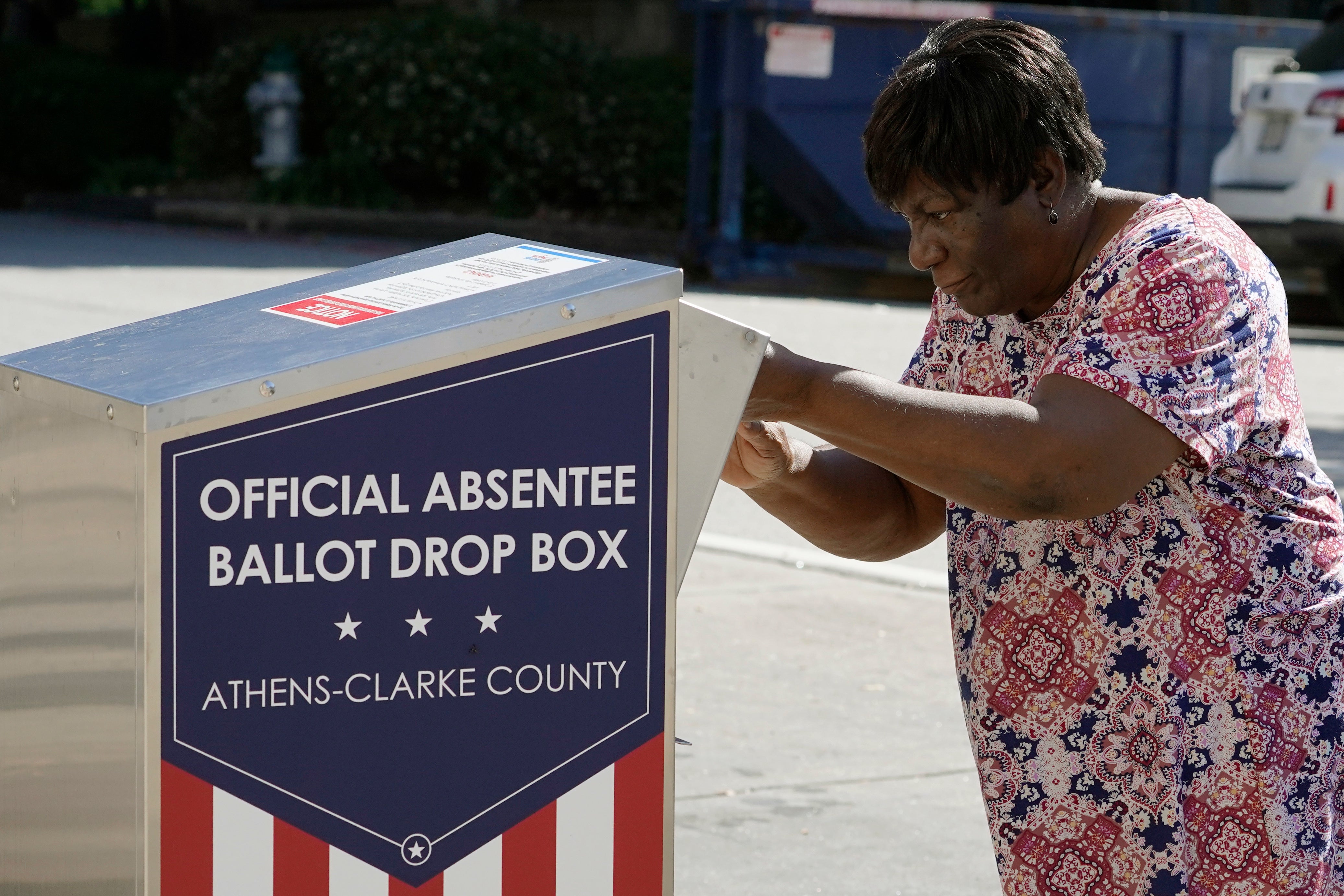Report shows big spike in mail ballots during 2020 election
A new report shows fewer than one-third of voters who cast ballots in last year’s U.S. presidential election did so at a polling place on Election Day as the coronavirus pandemic led states to greatly expand mail-in balloting and early voting

Your support helps us to tell the story
From reproductive rights to climate change to Big Tech, The Independent is on the ground when the story is developing. Whether it's investigating the financials of Elon Musk's pro-Trump PAC or producing our latest documentary, 'The A Word', which shines a light on the American women fighting for reproductive rights, we know how important it is to parse out the facts from the messaging.
At such a critical moment in US history, we need reporters on the ground. Your donation allows us to keep sending journalists to speak to both sides of the story.
The Independent is trusted by Americans across the entire political spectrum. And unlike many other quality news outlets, we choose not to lock Americans out of our reporting and analysis with paywalls. We believe quality journalism should be available to everyone, paid for by those who can afford it.
Your support makes all the difference.Fewer than one-third of voters casting ballots in last year's U.S. presidential election did so at a polling place on Election Day as the coronavirus pandemic led states to greatly expand mail-in balloting and early voting, according to a federal report released Monday.
The report by the U.S. Election Assistance Commission captures just how much the electorate embraced non-traditional voting methods despite repeated attempts by former President Donald Trump to undermine mail voting.
While voting by mail has been on the rise in recent years, the 2020 election marked a major shift in the way people cast ballots, at least temporarily. This was driven largely by the pandemic and voters wanting to avoid crowded polling places.
Roughly a quarter of all voters used a mailed ballot during the 2016 and 2018 elections, but that jumped to more than 43% in 2020, according to the report, which is based on responses submitted by state and local election officials. Remaining voters were split about evenly between casting their ballots at a polling place on Election Day or during early voting before Nov. 3.
It was the first time in the history of the survey that a majority of voters did not cast their ballots in person on Election Day.
The report found turnout increased 6.7 percentage points from the last presidential election in 2016. Nearly 68% of voters who are citizens and of voting age cast ballots that were counted.
“The election was a success,” said Michael McDonald, a political science professor at the University of Florida who runs ElectProject.org, which tracks turnout back to the 18th century. “There were some people, myself included, that looked at the primary elections last year and were concerned about what would happen in November. Clearly, both voters and election officials rose to the challenge.”
A major concern of voting experts was that a significant increase in mailed ballots would result in more of those ballots being rejected, They worried that an increase in the rate of rejections seen in some primary elections, held as the virus outbreak was worsening, would carry over to November. But that didn't happen.
Although the number of mailed ballots sent to voters doubled from 2016 to 2020, the rejection rate held relatively steady. In 2016, 1% of mailed ballots that were returned were rejected. In 2020, that figure was 0.8%, according to the report.
Several factors contributed to that, McDonald said. Election officials educated votes about the process for mail voting and how to avoid mistakes. They also created ways to alert voters who were in danger of having their ballot rejected and gave them a chance to fix it.
Several states also extended deadlines for ballots to arrive by mail as long as they were postmarked by Election Day.
It’s unclear whether the high percentage of voters casting mailed ballots will continue in future elections, in part because the expansion of mail balloting was temporary in a number of states.
Republican lawmakers and governors in a number of states also have implemented new restrictions. Georgia has new ID requirements for requesting mailed ballots, and Arizona and Florida will now force voters to repeatedly request mailed ballots instead of remaining on a list of permanent absentee voters.
The 2020 election and the pandemic also ushered in a major shift in the demographics of poll workers. Previous elections have largely relied on older poll workers to staff voting locations, but the pandemic and health concerns prompted many of them to stay away.
Among the 36 states that reported data on the age of poll workers, the percentage of poll workers between the ages of 26 and 40 nearly doubled -- from 8% in 2016 to 15% in 2020. Meanwhile, the percentage of poll workers between the ages of 61 and 70 decreased from 32% in 2016 to 27.3% in 2020 and those over the age of 71 decreased from 24% to 20.1% over the same period, according to the report.